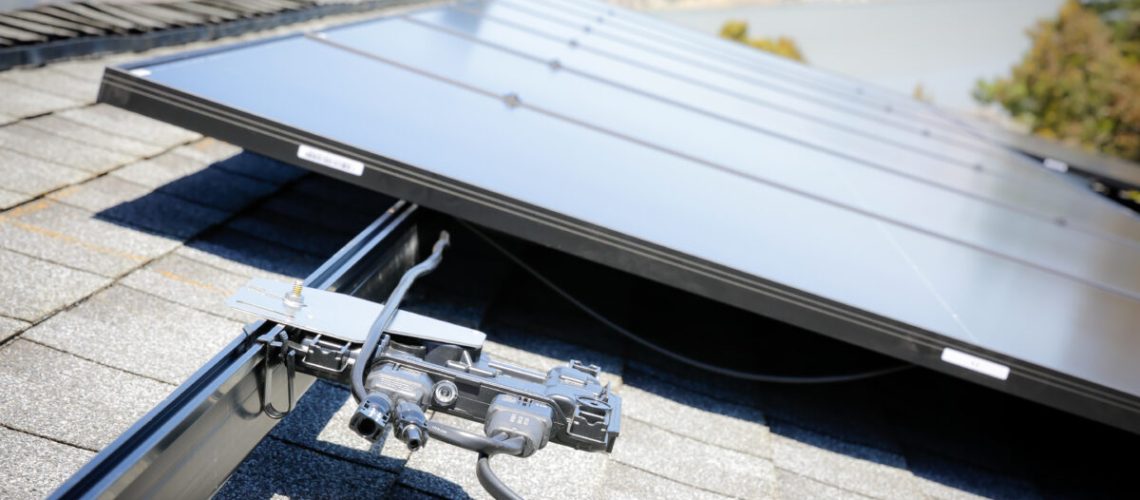The pace at which states and utilities are requiring smart inverters for new distributed solar and storage installations “generally continues to be slow,” said Stephen Rymsha, Sunrun’s director of grid solutions, public policy.
That matters because work in Hawaii, he said, has shown that hosting capacity for distributed solar and storage can increase by as much as 500% on a distribution circuit where smart inverters use default settings that regulate voltage. Hawaii’s main utility has greatly expanded its hosting capacity by requiring smart inverters that meet a global standard known as IEEE 1547-2018. Rymsha made his comments in an interview.
By regulating voltage, smart inverters enable more distributed solar and storage on a distribution circuit without the need for costly utility voltage regulation hardware. That’s true not just for a primary distribution circuit, Rymsha said, but also on a customer’s secondary circuit, or service connection from the customer’s service transformer—a circuit that may serve up to 10 or more customers.
In Hawaii, California and Illinois, the earliest adopters of smart inverter capabilities, Rymsha said “the research and the real-world experience” show that the IEEE default settings for the smart inverter functions known as volt-var and volt-watt “make a lot of sense.” Even before that, in the IEEE standards development process, he said the default settings were “well vetted by utilities and other stakeholders.”
Rymsha said that while the smart inverter settings being selected by states “should go through stakeholder processes,” enabling smart inverter voltage regulation functions quickly “is going to make interconnection easier for customers today and long into the future.”
Not-smart inverters
Eight states, along with certain utilities in 13 states, now require that distributed solar and storage installations use smart inverters that meet the IEEE 1547-2018 standard, according to a tracker maintained by the nonprofit group IREC.
Yet IREC’s tracker shows that some of the states and utilities that have adopted smart inverters specify that the inverters must use a volt-var setting that does not help control voltage on a distribution circuit. Without controlling voltage, the setting, which IREC’s tracker refers to as “unity power factor,” does not improve the circuit’s hosting capacity for solar and storage.
Rymsha noted that smart inverters also have functionalities that can support the transmission grid, and that settings enabling those functionalities are now required for newly installed smart inverters in the New England grid region ISO-NE. Yet the volt-var and volt-watt settings that regulate voltage on a distribution circuit “are still not being used across that entire region,” he said.
Other states, he said, are in a similar circumstance, as they are requiring the latest inverters, but without the voltage management settings enabled. “The pace of function activation should be accelerated,” Rymsha said.
Asked whether it would be feasible for a state to call for updating the settings in smart inverters used in rooftop solar systems after the systems are installed, Rymsha said that for inverters that have an internet connection, “I am aware of new grid codes being pushed to inverters, but the process in Hawaii to do this was complicated as it required customer consent in some form.”
Consumer protection
In Puerto Rico, where the distribution utility is expected to require smart inverters starting July 1, Rymsha said Sunrun is advocating for consumer protections as it participates in stakeholder discussions about smart inverters.
Rymsha anticipates the utility will require smart inverters to use the IEEE’s default volt-var and volt-watt settings, and if so, there should be “a consumer protection package, similar to what Hawaii has rolled out,” he said. California and Maryland have also set consumer protection packages when they required that both functions be activated, he added.
Hawaii, working in collaboration with the National Renewable Energy Laboratory, used a custom setting similar to the IEEE default setting for the volt-var function, and activated volt-watt for all customers, Rymsha said, “which really revolutionized the interconnection process for everyone.” Hawaii’s main utility uses advanced metering infrastructure data to monitor voltages, he said, plus the volt-watt function which enables curtailment to maintain voltage within the proper range when needed. But “if there is excessive curtailment, the utilities are responsible to upgrade the infrastructure within a predetermined amount of time.”
“We think something like that’s needed for Puerto Rico as well,” he said.
Plug and play
Beyond seeing “a lot of opportunity” to use smart inverter settings to enable greater adoption of distributed solar and storage, Rymsha sees an opportunity to “make it like buying any other product you like,” where a customer buys the product, “and very quickly it’s being delivered to your house and operating.”
“For a lot of customers today,” he said, their expectations start out “very high, and then when they get involved in the utility processes, delays can occur without any visibility from the development community—just big, big bottlenecks.”
“As we look to electrify society, we need to look at how we can radically change utility processes on the interconnection side, to really make distributed energy resources an attractive, consumer-friendly solution. And as these get built out at scale, there’s a lot of opportunities to provide grid services; ideally, that’s all packaged up front.”




